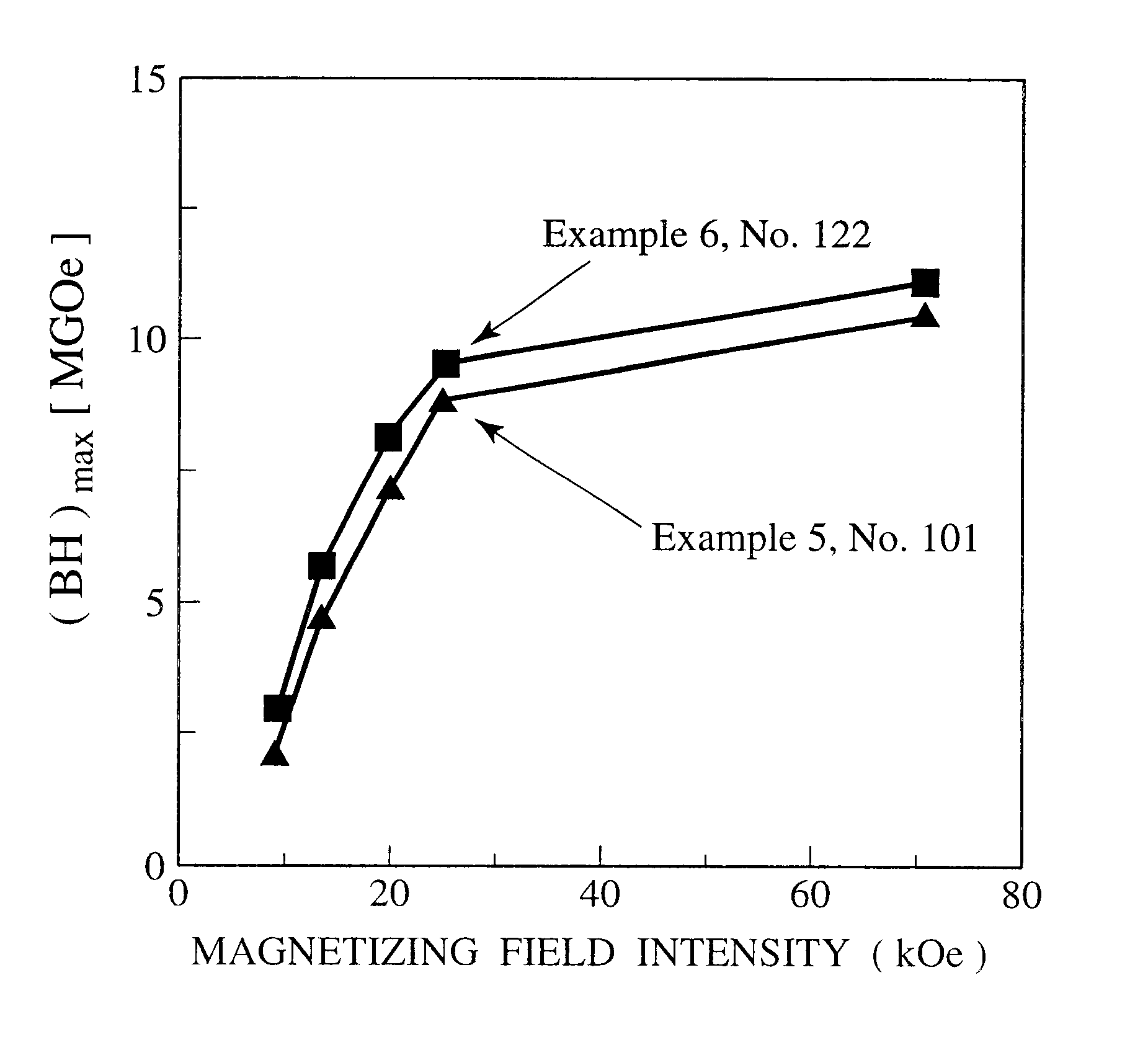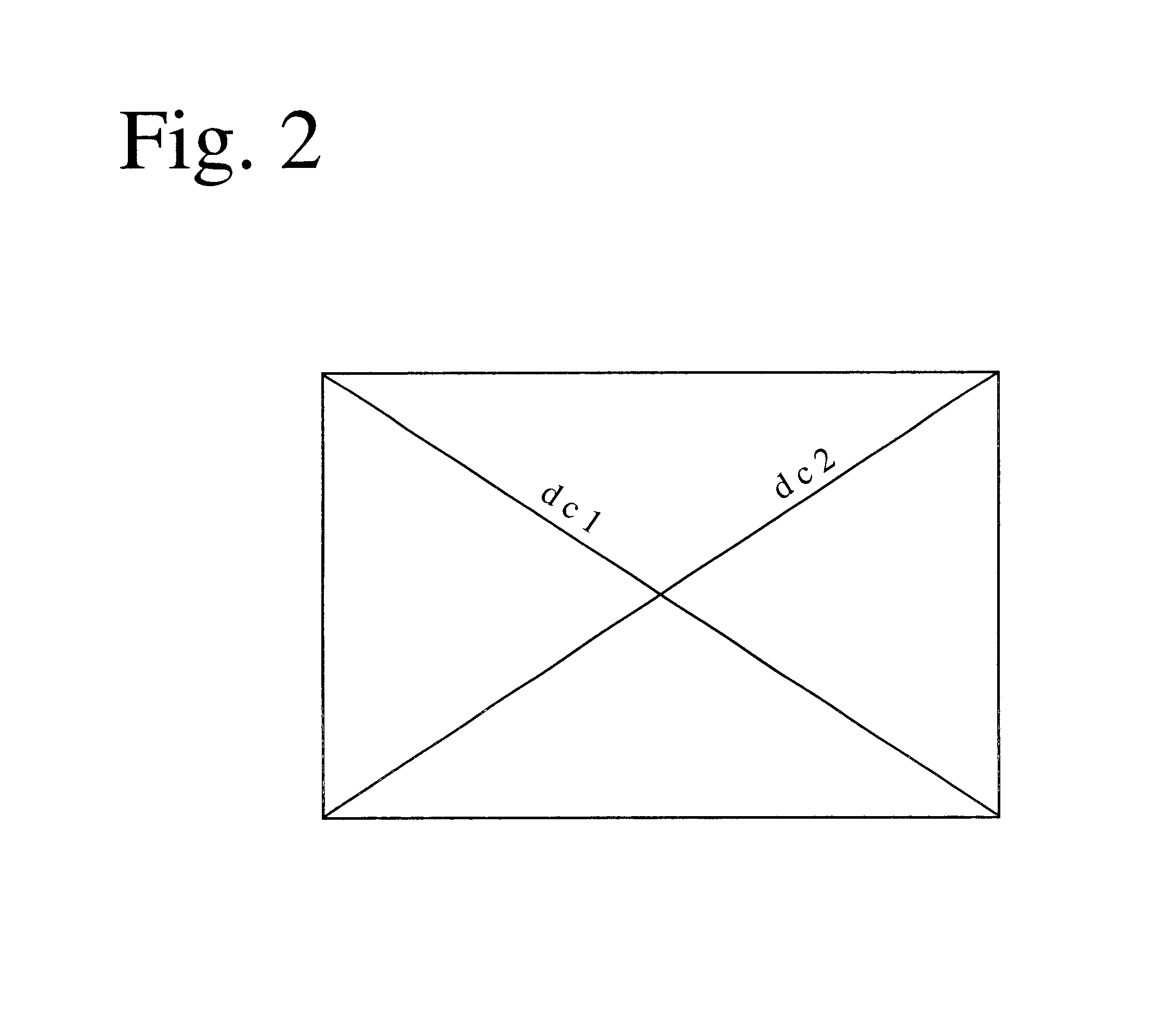Nitride type, rare earth magnet materials and bonded magnets formed therefrom
a rare earth magnet material and nitride technology, applied in the direction of magnetic materials, inorganic material magnetism, magnetic bodies, etc., can solve the problems of drastic deterioration of the magnetic properties of sm.sub.2 fe.sub.17 n.sub.x compounds, and the application of high temperatures is restricted
- Summary
- Abstract
- Description
- Claims
- Application Information
AI Technical Summary
Benefits of technology
Problems solved by technology
Method used
Image
Examples
example 2
To observe the correlation of the B content and magnetic properties, component elements were formulated in such proportions as to provide basic compositions of Nos. 31-34 shown in Table 2, and nitride-type, rare earth magnet material powders were produced in the same manner as in EXAMPLE 1. Each of the resultant nitride-type, rare earth magnet material powders had dp.sub.av of 80 .mu.m. Each nitride-type, rare earth magnet material powder was evaluated in the same manner as in EXAMPLE 1. The results are shown in Table 2 as Nos. 31-34.
A sample for measuring dc.sub.av was produced from the nitride-type, rare earth magnet material powder of No. 33, and its transmission electron microscopic photograph was taken in arbitrarily selected five view fields. FIG. 1 shows one of the resultant TEM photographs, and FIG. 2 explains how dc.sub.av was determined with respect to the nitride-type, rare earth magnet material powder of FIG. 1. Diagonal lines were drawn in each TEM photograph in five vi...
example 3
Comparative Example 4
To evaluate magnetic properties with varied types and contents of R, varied contents of nitrogen, and varied types and contents of M, and with Fe partially substituted by Co and / or Ni, nitride-type, rare earth magnet material powders were produced in the same manner as in EXAMPLE 1 except for having the basic compositions shown in Table 3. Each nitride-type, rare earth magnet material powder was evaluated in the same manner as in EXAMPLE 1. The results are shown in Table 3.
It was confirmed from Table 3 that any of the nitride-type, rare earth magnet material powders of EXAMPLE 3 had a structure composed of a fine hard magnetic phase of an R.sub.2 T.sub.17 -type structure free from .alpha.-Fe.
It is clear from Nos. 51-53 in EXAMPLE 3 and Nos. 71-73 in COMPARATIVE EXAMPLE 4 that when the percentage of Sm in the R components is 50 atomic % or more, and when the R components are 6-15 atomic %, good .sigma., iHc and .eta. are obtained.
It is clear from Nos. 54 and 55 i...
example 4
Sm, Fe, Ti and B each having a purity of 99.9% or more were formulated to a composition corresponding to the basic composition described below, and melted in a high-frequency furnace in an argon gas atmosphere. The resultant mother alloy melt was rapidly quenched by cooling rolls at a peripheral speed of 9.5 m / second, thereby obtaining a thin mother alloy ribbon having a thickness of 250-300 .mu.m. This thin mother alloy ribbon was placed in an atmosphere-controlled heat treatment furnace, and repeated the step of heating to 500.degree. C. while supplying a hydrogen gas at 1 atm to have the alloy to absorb hydrogen and the step of evacuating to carry out dehydrogenation, thereby coarsely pulverizing the alloy to an average particle size of 100 .mu.m.
The resultant powder was subjected to a hydrogenation / decomposition reaction treatment under the heating conditions shown in Table 4 at a hydrogen gas pressure of 1 atm. It was then subjected to a dehydrogenation / recombination reaction t...
PUM
 Login to View More
Login to View More Abstract
Description
Claims
Application Information
 Login to View More
Login to View More - R&D
- Intellectual Property
- Life Sciences
- Materials
- Tech Scout
- Unparalleled Data Quality
- Higher Quality Content
- 60% Fewer Hallucinations
Browse by: Latest US Patents, China's latest patents, Technical Efficacy Thesaurus, Application Domain, Technology Topic, Popular Technical Reports.
© 2025 PatSnap. All rights reserved.Legal|Privacy policy|Modern Slavery Act Transparency Statement|Sitemap|About US| Contact US: help@patsnap.com



